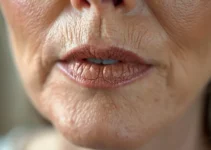Maintaining good oral hygiene is essential for a healthy mouth and overall wellbeing. This not only prevents dental issues such as cavities and gum disease but also supports your total health. Brushing twice a day, flossing daily, and regular dental check-ups are foundational practices. Additionally, choosing the right toothpaste and toothbrush can significantly enhance your oral care routine. Discover how simple adjustments to your daily habits can improve your oral hygiene and contribute to a healthier lifestyle.
Importance of Oral Hygiene
Oral hygiene is a cornerstone of overall health, playing a critical role in keeping the mouth and body free from infections and diseases. Practicing good oral hygiene routines can significantly reduce the risk of developing dental issues. Several studies have shown that proper oral care can positively impact systemic health, linking poor oral health to conditions such as heart disease and diabetes.
Maintaining a robust oral hygiene routine involves regular brushing, flossing, and dental check-ups. These practices help remove plaque, prevent cavities, and manage gum health. Incorporating these habits into daily life can lead to a healthier mouth and contribute to overall well-being.
Preventing Cavities
Cavities, also known as dental caries, are one of the most common dental problems worldwide. They form when bacteria in the mouth produce acids that erode the enamel. By following a consistent oral hygiene routine, you can substantially decrease the likelihood of developing cavities. Brushing your teeth at least twice a day with fluoride toothpaste helps to strengthen enamel and wash away food particles that bacteria feed on.
Flossing is equally important as it removes plaque and food debris from between teeth where a toothbrush cannot reach. Dental sealants and professional fluoride treatments are additional preventative measures that can be discussed with your dentist for added protection against cavities.
Reducing Gum Disease
Gum disease, or periodontal disease, is a common but preventable condition that affects the gums and bones supporting the teeth. Initial stages of gum disease, known as gingivitis, can cause redness, swelling, and bleeding gums. If left untreated, it can progress to periodontitis, resulting in tooth loss and even affecting overall health.
Consistent oral hygiene practices are crucial to reducing the risk of gum disease. Brushing and flossing help remove plaque, the primary cause of gum disease. Furthermore, regular dental cleanings by a professional can remove tartar (hardened plaque) that cannot be eliminated by brushing alone.
Studies have shown a strong link between gum disease and systemic conditions like cardiovascular disease and diabetes. Therefore, maintaining good oral health is essential not only for your teeth and gums but also for your general health.
By emphasizing the importance of oral hygiene and understanding its benefits, individuals can take proactive steps towards achieving better oral and overall health. For more insights and tips on maintaining excellent oral hygiene, be sure to read our other articles.
Daily Oral Hygiene Practices
Maintaining daily oral hygiene is essential for oral health and overall well-being. Effective oral hygiene practices can help prevent common dental issues such as cavities, gum disease, and bad breath. By incorporating proper habits into your daily routine, you can ensure that your teeth and gums remain healthy for years to come. This section will explore some key daily oral hygiene practices. Consistency is crucial when it comes to oral hygiene. Establishing a regular routine helps to remove plaque, prevent the buildup of tartar, and reduce the risk of oral infections. Regular visits to the dentist, combined with good at-home care, can drastically improve your oral health. Let’s delve into the specifics of some fundamental practices in daily oral hygiene.
Implementing the correct techniques and using appropriate tools is essential for effective oral hygiene. Investing in quality toothbrushes, floss, and other dental care products can make a significant difference in the care of your teeth and gums. Below, we will detail some of the most critical practices and techniques for maintaining daily oral health.
Brushing Techniques
Proper brushing is a cornerstone of effective oral hygiene. Dentists recommend brushing your teeth at least twice a day, for two minutes each time. This practice helps remove food particles and plaque, which are the primary causes of tooth decay and gum disease. Using a toothbrush with soft bristles is critical, as it prevents damage to the enamel and gum tissue. It’s important to replace your toothbrush every three to four months or sooner if the bristles become frayed.
When brushing, hold the toothbrush at a 45-degree angle to your gums. This angle allows the bristles to reach the gumline, where plaque tends to accumulate. Use gentle, circular motions rather than harsh back-and-forth movements. Harsh brushing can lead to gum recession and enamel erosion. Be sure to brush all surfaces of your teeth, including the outer, inner, and chewing surfaces. Don’t forget to brush your tongue as well, as it can harbor bacteria that cause bad breath.
Electric toothbrushes can be particularly effective at removing plaque and reducing gingivitis. Studies have shown that oscillating-rotating electric toothbrushes are more effective than manual toothbrushes in reducing dental plaque and gum inflammation. However, the choice between manual and electric ultimately depends on personal preference and convenience. The most important factor is the consistency and technique used in brushing.
Proper Flossing
Flossing is an often overlooked but essential aspect of daily oral hygiene. Flossing reaches areas between the teeth that a toothbrush cannot, helping to remove plaque and food particles that contribute to tooth decay and gum disease. The American Dental Association (ADA) recommends flossing at least once a day to maintain optimal oral health.
To floss effectively, use about 18 inches of dental floss and wind most of it around the middle fingers of both hands, leaving an inch or two to work with. Hold the floss tightly between your thumbs and forefingers, and gently slide it up and down between your teeth. Be sure to curve the floss around each tooth and go beneath the gumline, but avoid snapping the floss, as this can injure the delicate gum tissue.
There are various types of floss available, including waxed, unwaxed, flavored, and dental tape. The choice of floss can depend on personal preference and the spacing of your teeth. For those who find traditional floss challenging to use, alternatives like floss picks, water flossers, or interdental brushes can be just as effective.
Recent studies have highlighted the importance of flossing in preventing periodontal disease. Regular flossing can also help reduce the risk of systemic conditions related to oral health, such as heart disease and diabetes. Incorporating daily flossing into your oral hygiene routine can significantly contribute to long-term dental health.
By adopting these daily oral hygiene practices and techniques, you can maintain healthy teeth and gums, preventing various dental issues. For more insights and tips on oral health, be sure to explore our other articles.
Additional Tips for Optimal Oral Health
Maintaining optimal oral health goes beyond just brushing and flossing. It requires a comprehensive approach that includes regular professional care, mindful eating habits, and avoiding harmful activities. By incorporating these practices into your daily routine, you ensure a healthier smile and a better quality of life.
Below are some additional tips to help you achieve and maintain excellent oral health:
Regular Dental Checkups
Regular dental checkups are a cornerstone of good oral health. These visits allow your dentist to spot potential problems *early*, which is essential for preventing more severe issues down the line. During a dental checkup, your dentist will perform a thorough examination of your teeth, gums, and mouth. They might also take X-rays to get a clearer picture of your oral health.
The American Dental Association recommends scheduling a dental checkup at least twice a year. However, the frequency of visits might vary depending on your individual needs and risk factors. For instance, if you have a history of gum disease or frequent cavities, your dentist might suggest more frequent visits.
- Early detection of dental issues
- Professional cleaning to remove plaque and tartar
- Customized oral hygiene advice
Healthy Eating Habits
Your diet plays a significant role in maintaining your oral health. Foods rich in vitamins and minerals strengthen your teeth and gums, while a poor diet can lead to various dental problems. Foods that are high in sugar and acidic content can contribute to tooth decay and erosion. Be mindful of what you eat and drink, and aim to consume a balanced diet.
Incorporate the following into your daily diet to promote healthier teeth and gums:
- Calcium-rich foods: Such as dairy products, which help to maintain strong teeth.
- Vitamin C-rich foods: Like citrus fruits, which support gum health.
- Phosphorus-rich foods: Including meats and fish, which aid in the rebuilding of tooth enamel.
- Water: Helps to rinse away food particles and sugars, reducing the risk of cavities.
It’s also beneficial to limit snacks between meals. Frequent snacking can increase the risk of plaque buildup, as it gives bacteria more opportunities to produce acid that harms your teeth.
Avoiding Harmful Habits
Several common habits can negatively impact your oral health. Smoking, for example, is one of the leading causes of gum disease, tooth loss, and even oral cancer. Quitting smoking can dramatically improve your oral and overall health.
Other harmful habits to avoid include:
- Chewing on hard objects: Such as ice or pens, which can crack or damage your teeth.
- Grinding your teeth: Often associated with stress, teeth grinding can wear down your enamel and lead to other dental issues. Consider using a mouthguard if you grind your teeth at night.
- Using your teeth as tools: Refrain from using your teeth to open packages or bottles, as this can cause them to chip or break.
Making a conscious effort to eliminate these habits can significantly contribute to better oral health and prevent costly dental treatments in the future. By integrating these additional tips into your lifestyle, you pave the way for healthier teeth and gums. For more in-depth information on maintaining optimal oral health or addressing specific dental concerns, be sure to read our other articles.
Common Questions About Oral Hygiene
Here are some frequently asked questions that can help you maintain optimal oral health, ensuring your teeth and gums stay healthy and strong.
What are the best techniques for brushing my teeth?
Use a soft-bristled toothbrush and fluoride toothpaste. Brush at a 45-degree angle to the gums, gently using short, circular motions ensuring to cover all surfaces — outer, inner, and chewing. It’s recommended to brush for at least two minutes, twice a day.
How often should I replace my toothbrush?
It is advisable to replace your toothbrush every three to four months, or sooner if the bristles become frayed. A worn toothbrush won’t do a good job of cleaning your teeth. Keep an eye on children’s toothbrushes, as they may need to be replaced more frequently.

My name is Salman Kapa, a 73-year-old expert in bone regeneration and dental implantology. With decades of experience in the field, I am dedicated to advancing our understanding of oral health and hygiene. Through my research and writing, I aim to contribute to the development of innovative solutions in dental care.




